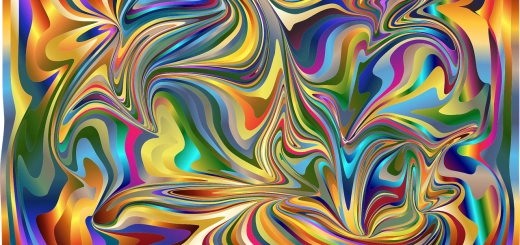The Impact of Graphics on Gaming Experience

Looking for more amazing products? Check out our online store and explore our collection here! Happy shopping!
Before diving in, please note: This post is for informational purposes only. If you’d like to know more about how we approach topics, feel free to check out our friendly Disclaimer Page.
Hey there, amazing readers! 
We’re committed to delivering quality posts, and your support (even just sticking around despite the ads) means everything to us. So, bear with us, and thanks for helping us keep the good vibes rolling. Now, on to the fun stuff!
TRANSLATE BUTTON AT THE END OF THE ARTICLE
Introduction: The Importance of Graphics in Gaming
In the world of gaming, graphics play a crucial role in shaping the overall experience for players.
Gone are the days of pixelated characters and blocky environments; today’s gamers expect stunning visuals that transport them to immersive worlds filled with intricate details and vibrant colors.
The importance of graphics in gaming cannot be understated, as they have the power to enhance immersion, evoke emotions, and captivate players in ways that were previously unimaginable.
From breathtaking landscapes to lifelike character animations, modern graphics have revolutionized the way we interact with games, making the virtual worlds feel more real than ever before.
Evolution of Graphics in Video Games
The evolution of graphics in video games has been nothing short of extraordinary.
From the early days of 2D sprites and simple backgrounds to the photorealistic 3D environments of today, the advancements in graphics technology have been truly remarkable.
The introduction of 3D graphics in the late 1990s opened up new possibilities for game developers, allowing them to create more immersive and visually stunning worlds.
As hardware capabilities have improved over the years, so too have the graphics in video games, with each new generation pushing the boundaries of what is possible in terms of visual fidelity and realism.
Realism vs. Artistic Style in Game Design
One of the ongoing debates in the world of game design is the balance between realism and artistic style when it comes to graphics.
While some players prefer games that strive for hyper-realism, with graphics that are indistinguishable from real life, others are drawn to more stylized and artistic visuals that prioritize creativity and imagination over fidelity.
Finding the right balance between realism and artistic style is crucial for game developers, as it can greatly impact how players perceive and engage with a game.
Ultimately, the choice between realism and artistic style comes down to the goals and vision of the game creators, as each approach has its own strengths and weaknesses.
Technological Advances in Graphics Processing
The technological advances in graphics processing have been a driving force behind the evolution of gaming graphics.
From the introduction of dedicated graphics cards to the development of advanced rendering techniques, the hardware and software used to create game visuals have come a long way.
Real-time ray tracing, for example, has revolutionized how light and shadows are rendered in games, creating more realistic and immersive environments.
Additionally, advancements in artificial intelligence have enabled developers to create more detailed and lifelike character animations, further enhancing the overall gaming experience.
How Graphics Enhance Immersion in Gaming
Graphics play a crucial role in enhancing immersion in gaming by creating visually compelling worlds that draw players in and make them feel like they are part of the game.
Whether it’s the intricate details of a medieval castle or the sprawling landscapes of a post-apocalyptic wasteland, high-quality graphics can transport players to new and exciting worlds that feel alive and vibrant.
By immersing players in these visually stunning environments, graphics can help blur the line between reality and fantasy, allowing players to fully engage with the game world and become emotionally invested in the experience.
Impact of Graphics on Player Engagement
The impact of graphics on player engagement cannot be overstated.
Visually stunning games are more likely to capture the attention of players and keep them invested in the gameplay experience.
High-quality graphics can elicit awe and wonder, evoke emotional responses, and create a sense of excitement and anticipation.
When players are immersed in a visually appealing game world, they are more likely to spend more time exploring, interacting, and experiencing everything the game has to offer.
As a result, graphics play a crucial role in attracting and retaining players, ultimately contributing to the success and longevity of a game.
The Role of Graphics in Creating Atmosphere
Graphics play a crucial role in creating atmosphere in games by setting the tone, mood, and overall aesthetic of the game world.
Whether it’s the dark and foreboding atmosphere of a horror game or the bright and colorful world of a platformer, graphics help establish the visual identity of a game and shape the player’s perception of the environment.
The use of lighting, color palettes, and environmental details all contribute to the overall atmosphere of a game, influencing how players feel and behave within the virtual world.
By carefully crafting the graphics to align with the desired atmosphere, game developers can create immersive and memorable experiences for players.
Influence of Graphics on Player Emotions
Graphics have a profound influence on player emotions, evoking feelings of joy, sadness, excitement, fear, and everything in between.
The visual fidelity and artistic style of a game can greatly impact how players respond emotionally to the gameplay experience.
For example, realistic graphics can heighten the tension and suspense in a horror game, while vibrant and colorful graphics can evoke feelings of happiness and nostalgia in a platformer.
By leveraging the power of graphics to evoke specific emotions, game developers can create more impactful and memorable experiences that resonate with players on a deeper level.
Graphics and Gameplay: Finding the Balance
While high-quality graphics can greatly enhance the overall gaming experience, it’s important to strike a balance between graphics and gameplay.
A visually stunning game with poor gameplay mechanics is unlikely to hold the interest of players for long, as the gameplay itself is the core of any good game.
Graphics should complement and enhance the gameplay experience, rather than overshadowing it.
By finding the right balance between graphics and gameplay, developers can create games that are not only visually appealing but also fun, engaging, and rewarding to play.
Ultimately, the best games are those that seamlessly integrate graphics and gameplay to create a cohesive and immersive experience for players.
Accessibility and Inclusivity in Gaming Graphics
Accessibility and inclusivity are important considerations when it comes to gaming graphics, as not all players have the same visual capabilities or preferences.
Game developers should strive to create graphics settings that cater to a wide range of players, allowing them to customize the visual experience to suit their individual needs.
This includes options for adjusting brightness, contrast, color saturation, and other visual settings to accommodate players with different visual impairments or preferences.
By making games more accessible and inclusive, developers can ensure that all players can enjoy and engage with their games, regardless of their visual abilities.
Future Trends in Gaming Graphics
The future of gaming graphics is an exciting and ever-evolving landscape, with new technologies and advancements on the horizon.
From the continued development of real-time ray tracing to the integration of virtual reality and augmented reality technologies, the possibilities for the future of gaming graphics are endless.
As hardware capabilities continue to improve, game developers will have even more tools at their disposal to create visually stunning and immersive worlds that push the boundaries of what is possible.
Additionally, advancements in machine learning and artificial intelligence will likely play a significant role in shaping the future of gaming graphics, enabling more realistic character animations, dynamic environments, and interactive elements.
Conclusion: The Ever-Changing Landscape of Gaming Graphics
In conclusion, the impact of graphics on gaming experience is undeniable, with visuals playing a crucial role in shaping player engagement, immersion, emotions, and atmosphere.
As technology continues to advance, the future of gaming graphics holds endless possibilities for innovation and creativity.
By finding the right balance between realism and artistic style, leveraging technological advances in graphics processing, and prioritizing accessibility and inclusivity, game developers can create visually stunning and inclusive experiences that resonate with players on a deep and meaningful level.
The ever-changing landscape of gaming graphics continues to evolve, pushing the boundaries of what is possible and redefining the way we interact with virtual worlds.

The Enlightenment Journey is a remarkable collection of writings authored by a distinguished group of experts in the fields of spirituality, new age, and esoteric knowledge.
This anthology features a diverse assembly of well-experienced authors who bring their profound insights and credible perspectives to the forefront.
Each contributor possesses a wealth of knowledge and wisdom, making them authorities in their respective domains.
Together, they offer readers a transformative journey into the realms of spiritual growth, self-discovery, and esoteric enlightenment.
The Enlightenment Journey is a testament to the collective expertise of these luminaries, providing readers with a rich tapestry of ideas and information to illuminate their spiritual path.
Our Diverse Expertise
While our primary focus is on spirituality and esotericism, we are equally passionate about exploring a wide range of other topics and niches 

To ensure we provide the most accurate and valuable insights, we collaborate with trusted experts in their respective domains 
Our blog originally focused on spirituality and metaphysics, but we’ve since expanded to cover a wide range of niches. Don’t worry—we continue to publish a lot of articles on spirituality! Frequently visit our blog to explore our diverse content and stay tuned for more insightful reads.
Hey there, amazing reader! 
Check out our store here and take a peek at some of our featured products below! Thanks for being awesome!











